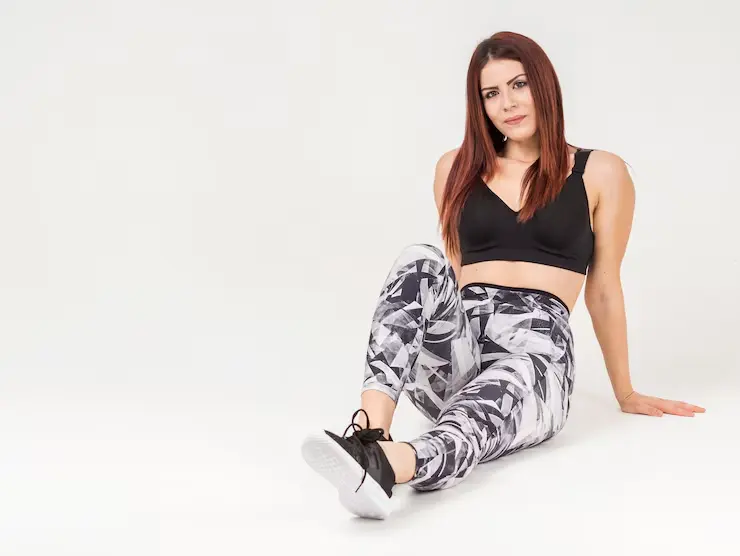Sportswear Clothing Manufacturers in Bangladesh – Dress Merchant is your trusted sourcing agent specializing in connecting global buyers with top apparel and garments manufacturers and exporters in Bangladesh. We streamline the sourcing process, ensuring high-quality production, competitive pricing, and timely delivery. Partner with Dress Merchant for reliable, efficient, and cost-effective solutions in the sportswear clothing industry in Bangladesh.
Thank you for reading this post, don't forget to subscribe!
1. Overview of Sportswear Clothing Manufacturing Industry in Bangladesh
1.1 Historical Growth of Sportswear Manufacturing
The sportswear manufacturing industry in Bangladesh has undergone remarkable transformation over the past two decades. Initially, the country’s garment sector primarily focused on producing basic clothing items such as T-shirts and casual wear. However, as global demand for activewear and performance apparel surged, Bangladeshi manufacturers gradually shifted their focus towards the specialized niche of sportswear.
In the early 2000s, the sector was relatively small and largely dependent on less technologically advanced processes. Local manufacturers faced challenges related to fabric sourcing, design expertise, and production technology. Over time, continuous investments in machinery, workforce skill development, and fabric innovation have enabled the industry to expand its capabilities substantially.
Moreover, the adoption of modern production techniques such as moisture-wicking fabrics, compression wear technology, and seamless garment manufacturing has helped elevate the quality of Bangladeshi sportswear to international standards. This evolution allowed manufacturers to cater to the requirements of major global sports brands, creating a strong foundation for future growth.
1.2 Current Market Size and Export Trends
Today, Bangladesh stands as one of the world’s leading exporters of sportswear, contributing a significant share to the country’s overall garment export revenue. The sportswear segment, including athletic clothing, activewear, and performance gear, has witnessed consistent growth, accounting for an increasing proportion of the nation’s textile export basket.
Export volumes have surged thanks to Bangladesh’s competitive advantage in offering cost-effective production without compromising quality. This has made the country a preferred manufacturing hub for international brands seeking reliable and affordable sportswear suppliers. Countries in Europe, North America, and Asia remain the primary markets for Bangladeshi sportswear exports.
In addition to quantity, product quality improvements have played a critical role in boosting export performance. The focus on compliance with international standards, ethical manufacturing practices, and environmental sustainability has strengthened Bangladesh’s reputation as a trustworthy supplier in the global marketplace.
1.3 Key Players in the Market
The sportswear manufacturing landscape in Bangladesh is characterized by a diverse range of players, from large multinational conglomerates to specialized factories dedicated exclusively to sports and activewear. Prominent manufacturers have secured international certifications such as ISO, WRAP, and OEKO-TEX, which validate their commitment to quality, social compliance, and environmental responsibility.
Many of these companies collaborate closely with top global sports brands, producing everything from performance tees and track pants to high-tech compression wear and sports accessories. This partnership network has encouraged innovation and continuous improvement within the sector.
Furthermore, several manufacturers invest in research and development to keep up with emerging trends and fabric technologies, positioning Bangladesh as an emerging leader in sportswear production.
1.4 Government Policies and Support
The government of Bangladesh recognizes the strategic importance of the garment and textile industries, including sportswear manufacturing, to the national economy. To sustain and enhance growth, the government has implemented a range of supportive policies aimed at facilitating export-oriented production.
These measures include tax holidays, export incentives, and subsidies for machinery upgrades. Additionally, significant investments in infrastructure—such as industrial parks, improved transportation networks, and power supply—have contributed to a more efficient manufacturing environment.
Regulatory reforms to streamline business processes and encourage foreign direct investment have also positively impacted the sportswear manufacturing sector. The government’s proactive approach helps create a favorable ecosystem for manufacturers, enabling them to compete effectively on the global stage.
2. Fabric and Material Sourcing for Sportswear
2.1 Importance of Performance Fabrics
Performance fabrics are the backbone of quality sportswear, playing a crucial role in determining how well the garment performs during physical activity. Materials like polyester blends, spandex, nylon, and specialized moisture-wicking textiles provide essential features such as breathability, stretchability, and durability. Breathability ensures that sweat vapor can escape, keeping athletes dry and comfortable during intense workouts.
Stretchability, primarily offered by spandex and elastane fibers, allows the fabric to move fluidly with the body, providing freedom of movement without restriction. Durability is equally important, as sportswear must withstand repetitive use, frequent washing, and exposure to environmental factors without losing its shape or function. By selecting the right performance fabrics, manufacturers can create sportswear that enhances athletic performance and user experience.
2.2 Local Versus Imported Materials
Bangladesh has a well-established textile industry that produces a wide range of fabric materials domestically. Many sportswear manufacturers leverage these local resources to maintain cost efficiency and support the domestic economy. However, when it comes to meeting the high technical specifications required for premium sportswear, manufacturers often turn to imported materials.
Imported fabrics from countries like South Korea, Japan, and China frequently offer advanced features, superior finishes, and innovative blends not yet widely available in the local market. This blend of local and imported sourcing allows manufacturers to strike a balance between cost, quality, and technological advancement, enabling them to produce competitive sportswear that meets international standards.
2.3 Sustainable and Eco-Friendly Fabric Options
With growing environmental awareness, both consumers and manufacturers are increasingly prioritizing sustainability in fabric sourcing. The sportswear industry in Bangladesh is no exception, as many manufacturers are now incorporating eco-friendly materials such as organic cotton, recycled polyester, and bamboo fibers into their product lines. Organic cotton is cultivated without synthetic pesticides, reducing environmental harm and promoting healthier ecosystems.
Recycled polyester, made from post-consumer plastic waste, helps minimize landfill accumulation and lowers the carbon footprint associated with virgin polyester production. Bamboo fibers are prized for their natural antibacterial properties and biodegradability. By adopting these sustainable fabrics, manufacturers are aligning with global eco-conscious trends and appealing to a growing segment of environmentally aware consumers.
2.4 Innovations in Textile Technology
Bangladeshi sportswear manufacturers are rapidly embracing the latest advances in textile technology to differentiate their products and improve athlete comfort and safety. Some of these innovations include anti-odor treatments that inhibit bacterial growth, preventing unpleasant smells even after prolonged use. UV protection finishes have become a key feature, shielding athletes from harmful ultraviolet rays during outdoor activities.
Quick-dry fabric technologies ensure that moisture evaporates rapidly, reducing discomfort and chafing. Other advancements, such as seamless knitting and temperature-regulating textiles, are also gaining traction. These technological upgrades not only enhance product performance but also position Bangladesh as a forward-thinking player in the global sportswear market.
3. Manufacturing Processes and Technology
3.1 Cutting-Edge Production Techniques
The sportswear manufacturing industry in Bangladesh has witnessed significant advancements in production technologies over the past decade. Leading manufacturers now incorporate cutting-edge techniques such as automated fabric cutting, seamless knitting, and advanced stitching to enhance both precision and efficiency throughout the production line. Automated cutting machines, equipped with computer-controlled blades, allow for faster and more accurate cutting of fabric pieces, reducing fabric wastage and ensuring consistent sizing.
Seamless knitting technology has revolutionized the way sportswear is made, especially for garments requiring high elasticity and durability, such as compression wear and performance leggings. This technique eliminates the need for multiple sewn seams, resulting in greater comfort, enhanced flexibility, and improved durability for the wearer. Additionally, advanced stitching methods, including flatlock and overlock stitching, are widely used to provide strong, stretchable seams that withstand the rigorous movements typical in sports activities.

By integrating these technologies, Bangladeshi manufacturers are able to deliver sportswear products that meet international quality standards and consumer expectations, while also improving production speed and reducing labor costs.
3.2 Role of Quality Control and Inspection
Maintaining superior quality is paramount in the competitive sportswear market, and Bangladesh’s manufacturers have established stringent quality control protocols to ensure excellence at every stage of production. The process begins with thorough fabric testing, where materials are examined for colorfastness, tensile strength, breathability, and moisture-wicking properties. These initial tests help guarantee that only premium textiles proceed to the manufacturing floor.
In-line inspections form an integral part of the quality assurance framework, with trained quality inspectors monitoring every production step, from cutting and sewing to finishing and packaging. Such continuous supervision helps detect defects early, reducing rework and waste. Moreover, final product inspections evaluate the overall fit, stitching integrity, and compliance with buyer specifications and international standards such as ISO and OEKO-TEX.
This comprehensive approach to quality control not only ensures that the finished sportswear is durable and comfortable but also helps manufacturers build trust with global brands and retailers who demand reliable and consistent product quality.
3.3 Use of Computer-Aided Design (CAD) and Pattern Making
The adoption of computer-aided design (CAD) and digital pattern making technologies has transformed the design and development phase in Bangladesh’s sportswear industry. CAD systems enable designers to create highly detailed digital prototypes, allowing for easy modifications and precise control over garment dimensions. This digital workflow minimizes errors and accelerates the transition from concept to sample production.
Digital pattern making tools also improve the accuracy of sizing and fit, essential for performance apparel that must conform closely to the athlete’s body. Designers can simulate fabric behavior and garment stretch on CAD platforms, helping optimize comfort and performance before physical samples are made. Additionally, these systems facilitate better communication between design teams and production units by providing clear technical specifications and cutting instructions.
The result is a streamlined development process that reduces lead times, cuts costs, and enhances the overall quality and consistency of sportswear collections.
3.4 Adoption of Sustainable Manufacturing Practices
Sustainability is increasingly becoming a focus area for Bangladesh’s sportswear manufacturers as global consumers demand environmentally responsible products. Many factories are adopting eco-friendly manufacturing practices aimed at reducing their environmental footprint. Water conservation techniques, such as closed-loop water recycling systems, are being implemented to minimize water consumption during dyeing and finishing processes.
Manufacturers are also reducing chemical waste by using low-impact dyes and non-toxic finishing agents, which help meet stringent environmental regulations and certifications. Energy-efficient machinery, including advanced HVAC and lighting systems, contribute to lowering carbon emissions and operational costs.
Furthermore, some companies have integrated waste management programs that recycle fabric scraps and packaging materials, promoting circular economy principles within their production facilities. These sustainable initiatives not only support environmental stewardship but also enhance the global competitiveness of Bangladesh’s sportswear sector by aligning with international brands’ sustainability commitments.
4. Design and Innovation in Sportswear
4.1 Trends in Sportswear Design
In recent years, the sportswear industry has seen a significant shift toward merging functionality with modern aesthetics. Current trends emphasize ergonomic cuts that enhance comfort and mobility, ensuring that athletes and fitness enthusiasts experience optimal performance during physical activities. These ergonomic designs are carefully tailored to fit the natural contours of the body, reducing friction and allowing greater freedom of movement.
Color blocking has become another popular trend, where bold, contrasting panels of color are strategically placed to create visually striking designs. This technique not only adds style but also helps in accentuating muscle groups and improving visibility in outdoor activities. Alongside this, minimalistic aesthetics remain favored for their clean lines and subtle details, catering to consumers who prefer understated yet sophisticated sportswear.
Moreover, sustainability is influencing design trends, with many manufacturers opting for eco-friendly materials and dyes. This shift aligns with the global movement towards responsible fashion, making sportswear not just performance-driven but also environmentally conscious.
4.2 Collaboration with Global Brands and Designers
Bangladeshi sportswear manufacturers have increasingly embraced collaboration as a pathway to innovation and market expansion. Partnerships with renowned international designers and global brands allow local factories to tap into cutting-edge design expertise and market insights.
These collaborations often result in exclusive collections tailored to meet the preferences of diverse consumer bases across different regions. By working closely with foreign design teams, Bangladeshi manufacturers can incorporate unique styles, advanced fabrication techniques, and quality standards that elevate their products on the global stage.
Such international alliances also open doors for knowledge transfer, helping local talent to hone their skills and stay updated with worldwide fashion trends. This collaborative spirit fosters a dynamic environment where creativity and technology converge, driving continuous innovation in sportswear design.
4.3 Customization and Private Label Manufacturing
Flexibility in manufacturing is a key strength of the Bangladeshi sportswear sector. Many factories specialize in private label manufacturing, providing customized solutions for both startups and established brands. This service includes personalized design options, fabric selections, and branding, enabling clients to create distinctive products that resonate with their target audience.
The ability to offer bespoke sportswear solutions makes Bangladesh a competitive destination for brands seeking cost-effective yet high-quality production. Private label services often extend beyond design to include packaging, labeling, and logistics support, ensuring a seamless supply chain experience.
Furthermore, customization extends to niche markets, such as team uniforms, fitness apparel for specific sports, or adaptive wear for differently-abled athletes. This diversity in production capabilities allows manufacturers to cater to varied demands, strengthening their position in the international sportswear market.
4.4 Integration of Smart Wearables and Tech
The integration of technology in sportswear represents a forward-looking trend that is beginning to take shape in Bangladesh’s manufacturing landscape. Smart fabrics embedded with sensors capable of monitoring vital signs such as heart rate, body temperature, and muscle activity are slowly being explored by innovators in the industry.
These smart wearables enhance athletic performance by providing real-time feedback and health data, enabling users to optimize their workouts and prevent injuries. While the adoption of such advanced technology is still in its early stages, Bangladeshi manufacturers are showing promising interest in research and development partnerships with tech companies.
As consumer demand for wearable technology grows, the sportswear sector in Bangladesh is poised to evolve by integrating these innovations into mainstream production. This advancement will not only improve product functionality but also position Bangladesh as a key player in the future of smart sports apparel.
5. Compliance, Certifications, and Ethical Manufacturing
5.1 Importance of International Compliance
For manufacturers in the sportswear industry, especially those aiming to supply premium international markets, adherence to global compliance standards is not just a legal requirement but a strategic imperative. International compliance encompasses a broad range of labor laws, safety regulations, and environmental mandates that ensure products are manufactured responsibly and sustainably. Failure to meet these standards can result in loss of business opportunities, reputational damage, and even legal penalties.
Compliance with international standards signals to global buyers that a manufacturer operates transparently and ethically. This is particularly important as consumers and brands alike are increasingly prioritizing responsible sourcing and corporate social responsibility. Manufacturers that maintain strict compliance are better positioned to build trust, foster long-term partnerships, and command premium pricing for their products.
Moreover, adhering to these regulations helps create a safer and healthier workplace, which can lead to improved worker morale and productivity. It also ensures that production processes minimize negative impacts on the environment, aligning with the growing global movement toward sustainable manufacturing practices.
5.2 Common Certifications Held by Manufacturers
To demonstrate their commitment to ethical production and sustainability, many sportswear manufacturers in Bangladesh pursue internationally recognized certifications. Among the most prevalent are WRAP (Worldwide Responsible Accredited Production), OEKO-TEX, GOTS (Global Organic Textile Standard), and Bluesign.
WRAP certification focuses on lawful, humane, and ethical manufacturing practices, assuring buyers that the facility complies with local labor laws and international workplace standards. OEKO-TEX certification guarantees that the textiles used are free from harmful substances, ensuring consumer safety and environmental responsibility.
GOTS certification is highly regarded in the organic textile industry, confirming that the entire supply chain—from raw materials to finished product—is environmentally and socially responsible. Similarly, Bluesign certification emphasizes resource productivity, consumer safety, water emissions, air emissions, and occupational health and safety.
By holding these certifications, manufacturers not only improve their operational standards but also make their products more attractive to eco-conscious brands and consumers.
5.3 Labor Practices and Workers’ Welfare
Ethical labor practices are fundamental to maintaining international compliance and building a sustainable manufacturing ecosystem. Leading manufacturers in Bangladesh prioritize creating safe working environments, providing fair wages, and promoting worker empowerment.
Safety protocols, including fire prevention, proper ventilation, and access to medical facilities, are strictly enforced to protect employees. Fair wages and timely payment ensure workers can maintain a decent standard of living, which reduces turnover and enhances loyalty.
Empowerment initiatives such as training programs, grievance mechanisms, and participatory decision-making help workers feel valued and respected. These measures not only comply with global labor standards but also foster a positive workplace culture that drives productivity and quality.
Manufacturers that excel in labor welfare often attract more business from international clients who are keen to uphold their brand’s social responsibility credentials.
5.4 Environmental Impact Mitigation Strategies
In response to growing environmental concerns, factories are adopting various strategies to mitigate their ecological footprint. These efforts are essential for compliance with international environmental regulations and for meeting the expectations of environmentally conscious buyers.
Wastewater treatment plants are being installed to clean industrial effluents before they are discharged, preventing contamination of local water sources. Waste recycling initiatives help reduce landfill use and promote the reuse of materials, contributing to a circular economy.
Energy conservation is another critical area, with manufacturers investing in energy-efficient machinery, LED lighting, and renewable energy sources such as solar power. These steps reduce greenhouse gas emissions and lower operational costs.
By integrating these environmental mitigation measures, sportswear manufacturers not only protect natural resources but also enhance their competitiveness in global markets where sustainability is increasingly a deciding factor.
6. Supply Chain and Logistics Management
Efficient supply chain and logistics management play a pivotal role in the garment manufacturing industry, particularly in a competitive market like Bangladesh. The ability to source materials promptly, manage inventory effectively, and handle shipping and export logistics with precision directly impacts production timelines, costs, and ultimately customer satisfaction. Understanding and optimizing each step of this process is essential for manufacturers aiming to thrive in both local and international markets.
6.1 Sourcing Raw Materials Efficiently
One of the foundational elements of supply chain management is the timely and cost-effective sourcing of raw materials. For garment manufacturers in Bangladesh, this means establishing strong relationships with reliable suppliers of fabrics, trims, and accessories. Efficient sourcing helps prevent production delays by ensuring that all necessary materials are available when needed.
Additionally, manufacturers often work closely with multiple suppliers to diversify their material sources and mitigate risks such as price fluctuations or supply shortages. This strategic sourcing also involves evaluating supplier quality, delivery speed, and price competitiveness, enabling manufacturers to make informed purchasing decisions that balance cost with quality.
6.2 Inventory Management Systems
Inventory management is a critical component in preventing overstocking or stockouts of raw materials and finished products. Modern garment manufacturers in Bangladesh increasingly rely on advanced inventory tracking and forecasting systems to optimize their inventory levels.
These systems use data analytics to predict demand patterns and adjust inventory accordingly. By doing so, manufacturers can reduce carrying costs and minimize waste caused by obsolete or excess stock. Real-time inventory visibility also allows production planners to coordinate material flow more precisely, enhancing overall production efficiency.
6.3 Shipping and Export Logistics
Bangladesh’s strategic geographic location near major seaports like Chittagong and Mongla offers a significant advantage in global shipping logistics. The country has developed a well-established export infrastructure that supports the timely and cost-effective transportation of garments to international markets.
Efficient shipping logistics include selecting the right modes of transport, negotiating competitive freight rates, and coordinating customs clearance procedures to avoid delays. Manufacturers also benefit from specialized export services such as consolidated shipments and expedited delivery options, which help maintain customer satisfaction by meeting tight delivery schedules.
6.4 Impact of Global Trade Policies
Navigating global trade policies is a complex but crucial aspect of supply chain management for Bangladesh’s garment manufacturers. Trade agreements, tariffs, and customs regulations can significantly affect the cost structure and profitability of exports.
Manufacturers must stay informed about changes in trade policies and work closely with logistics providers and trade experts to ensure compliance. Favorable trade agreements, such as those Bangladesh has with the European Union and the United States, can provide tariff advantages that improve market access and competitiveness.
Conversely, sudden changes in tariffs or stricter customs controls may require manufacturers to adjust their pricing strategies or supply chain routes. Proactive management of these factors helps manufacturers minimize risks and capitalize on emerging opportunities in the global apparel market.
7. Challenges Faced by Sportswear Manufacturers in Bangladesh
The sportswear manufacturing industry in Bangladesh has witnessed remarkable growth over the past decades. However, despite its rapid expansion and increasing global recognition, the sector continues to grapple with several significant challenges that impact its overall efficiency and competitiveness. These challenges range from infrastructural limitations to environmental compliance pressures, all of which require strategic attention and investment to overcome.
7.1 Infrastructure Limitations
One of the most persistent hurdles for sportswear manufacturers in Bangladesh is the country’s infrastructure. While the industry has expanded, critical infrastructure such as power supply and transportation remains inconsistent and underdeveloped in many regions. Frequent power outages disrupt production lines, causing delays and increasing operational costs as factories rely on backup generators, which are costly and less efficient.
Transportation bottlenecks add another layer of difficulty. Poor road conditions, traffic congestion, and limited port capacity often delay the timely shipment of raw materials and finished goods. This not only hampers supply chain efficiency but also affects delivery schedules, which can lead to penalties or lost contracts in an industry where timing is crucial.
Efforts are underway to improve these conditions, but infrastructure development is a slow process. Until these issues are resolved, manufacturers must find ways to optimize production schedules and logistics to mitigate the impact of these limitations.
7.2 Rising Labor Costs and Workforce Retention
Labor is the backbone of Bangladesh’s garment industry, including sportswear manufacturing. Traditionally, the country has benefited from a large pool of affordable labor, which attracted many international brands. However, in recent years, rising labor wages have increased production costs significantly. While better wages are beneficial for workers, they create pressure on manufacturers to enhance productivity to maintain competitive pricing.
Additionally, high employee turnover rates remain a challenge. The demanding nature of garment work, combined with relatively low job satisfaction and limited career growth opportunities, leads to frequent resignations and recruitment cycles. This constant churn affects production continuity and increases training costs.
To address these issues, manufacturers are now focusing on improving workplace conditions, providing skill development programs, and fostering better labor relations to retain skilled workers and reduce turnover. Investing in automation and more efficient production technologies also helps to counterbalance rising labor costs.
7.3 Competition from Other Manufacturing Countries
Bangladesh’s sportswear industry faces stiff competition from other countries with established manufacturing bases, such as Vietnam, China, and India. These nations often offer more advanced infrastructure, superior technology, and sometimes faster turnaround times. This competitive environment urges Bangladeshi manufacturers to continuously innovate and improve quality to retain their market share.
While Bangladesh benefits from lower labor costs, competitors often emphasize better quality control, product diversification, and integrated supply chains. To stay competitive, Bangladeshi manufacturers must invest in research and development, adopt modern manufacturing techniques, and build strong relationships with international buyers who prioritize reliability and innovation.
7.4 Environmental Compliance and Pressure
Global awareness of environmental issues has led to stricter regulations and growing pressure on garment manufacturers worldwide, including those in Bangladesh. International buyers and regulatory bodies increasingly demand compliance with environmental standards, pushing manufacturers to adopt cleaner and more sustainable production practices.
Implementing such changes requires significant investment in eco-friendly technologies, waste management systems, and energy-efficient processes. For many manufacturers, especially smaller factories, these costs can be prohibitive. Nevertheless, failure to comply risks losing business from environmentally conscious brands and damaging the industry’s reputation.
Manufacturers are therefore exploring green initiatives and seeking partnerships to access funding for sustainable development. Embracing environmental compliance not only fulfills regulatory requirements but also opens new market opportunities with global brands committed to sustainability.
8. Market Opportunities and Emerging Trends
8.1 Growth in Domestic Sportswear Demand
In recent years, Bangladesh has witnessed a significant rise in fitness awareness among its population. As more people embrace healthy lifestyles and actively participate in various sports and fitness activities, the demand for quality sportswear within the domestic market has surged. This trend is driven by urbanization, increasing disposable incomes, and a cultural shift towards wellness and physical activity.
Local consumers are becoming more discerning, seeking sportswear that combines comfort, durability, and style. This growing preference is encouraging manufacturers to innovate and improve the quality of their products. Domestic brands are also leveraging this opportunity by creating more functional and fashionable sportswear lines tailored to local tastes and climatic conditions.
Moreover, the increase in gym memberships, sports clubs, and recreational facilities across the country is further propelling the demand. This growth in the domestic market presents a lucrative opportunity for manufacturers to expand their product ranges and invest in marketing strategies that appeal directly to local consumers.
8.2 Expansion into New International Markets
While Bangladesh has long been a strong player in exporting sportswear to established markets like the United States and Europe, manufacturers are now strategically exploring new frontiers to diversify their export portfolios. Emerging markets in Africa, South America, and Southeast Asia are showing promising potential due to their growing middle-class populations and increasing interest in sports and fitness.
These new international markets offer several advantages, including less saturated competition and a rising demand for affordable yet high-quality sports apparel. Manufacturers are adapting their products to meet specific regional preferences and requirements, such as climate-appropriate fabrics and culturally relevant designs.
Additionally, entering these emerging markets helps reduce dependency on traditional export destinations and mitigates risks associated with trade disruptions or economic downturns in any single region. This diversification strategy is vital for sustaining long-term growth in the global sportswear industry.
8.3 Digitalization and E-commerce Integration
The rapid rise of digital technology and e-commerce platforms has transformed the sportswear industry worldwide, and Bangladesh is no exception. Increasing internet penetration and smartphone usage have opened new channels for manufacturers to connect directly with consumers, bypassing traditional retail intermediaries.
E-commerce offers an efficient platform for sportswear brands to showcase their products, provide detailed information, and engage customers through personalized marketing. This direct-to-consumer approach not only improves profit margins but also enables brands to gather valuable data on customer preferences and buying behavior.
Moreover, the integration of digital tools such as virtual fitting rooms, online customization, and social media marketing is enhancing brand visibility and customer loyalty. As more consumers embrace online shopping, manufacturers investing in robust digital infrastructure and strategic online presence are well-positioned to capture growing market shares.
8.4 Focus on Women’s and Youth Sportswear Segments
The sportswear market is experiencing a notable shift with increasing attention on women’s and youth segments. Female athletes and young consumers are emerging as influential demographics that demand specialized product offerings designed to meet their unique needs.
Manufacturers are developing sportswear that emphasizes both performance and style for women, recognizing the rising participation of females in sports and fitness activities. Innovations in fabric technology, fit, and design aesthetics are tailored to enhance comfort and confidence.
Similarly, the youth segment is driving trends with preferences for vibrant, trendy, and versatile sportswear that can be worn both for athletic activities and casual settings. Brands are capitalizing on this by creating age-appropriate, fashionable sports apparel that appeals to younger consumers.
By focusing on these niche segments, manufacturers can tap into new growth areas, foster brand loyalty early on, and differentiate themselves in a competitive marketplace. This targeted approach is becoming a key driver of growth and innovation in the sportswear industry.
9. Role of Research and Development in Advancing Sportswear
Research and Development (R&D) plays a pivotal role in the continuous advancement of sportswear, driving innovation that enhances performance, comfort, and sustainability. As consumer expectations evolve and technology progresses, manufacturers invest heavily in R&D to stay competitive and deliver superior products. This section explores the various dimensions through which R&D influences the sportswear industry, from product innovation to sustainable production practices.
9.1 Investment in Product Innovation
One of the primary focuses of R&D in sportswear is product innovation. Continuous research allows manufacturers to create fabrics and materials that significantly improve athlete comfort and performance. Innovations such as moisture-wicking textiles, breathable mesh fabrics, and lightweight yet durable materials have transformed how sportswear functions.
These advancements do not only improve athletic performance but also extend the lifespan of sportswear products, offering greater durability under rigorous use. R&D teams work closely with material scientists and engineers to experiment with novel fibers, fabric blends, and finishing techniques. For example, the integration of stretchable and compression fabrics supports muscle movement and reduces fatigue, demonstrating how innovation directly benefits end-users.
9.2 Collaboration with Textile Institutes and Universities
Partnerships between sportswear manufacturers and academic institutions play a crucial role in fostering innovation. Textile institutes and universities provide a fertile ground for cutting-edge research in fabric technology, sports science, and wearable technology.
Through collaborative projects, manufacturers gain access to advanced laboratories and expert knowledge, accelerating the development of new materials and production processes. Furthermore, these partnerships help cultivate a skilled workforce trained in the latest sportswear technologies. Internships, joint research programs, and seminars contribute to bridging the gap between academic research and industrial application, ensuring that innovations are practical and market-ready.
9.3 Development of Sustainable Production Techniques
Sustainability has become a major concern within the sportswear industry, and R&D is at the forefront of developing eco-friendly production methods. Researchers focus on minimizing the environmental footprint of sportswear manufacturing by exploring sustainable dyeing processes, waterless printing techniques, and efficient recycling methods.
For instance, waterless dyeing technologies reduce water consumption dramatically, addressing one of the industry’s largest sources of environmental impact. Similarly, recycling programs that repurpose post-consumer textiles into new sportswear products rely heavily on R&D to ensure fabric quality and performance are maintained. These sustainable innovations not only appeal to environmentally conscious consumers but also comply with increasingly stringent global regulations.
9.4 Consumer Feedback and Market Analysis
An often overlooked but essential component of R&D is the systematic incorporation of consumer feedback and market analysis. Manufacturers collect detailed insights on user preferences, fit, comfort, and performance to refine their products continually.
By analyzing market trends and consumer behavior, R&D teams can anticipate future demands and tailor product lines accordingly. This consumer-centric approach ensures that sportswear is not only technologically advanced but also aligned with the needs and desires of athletes and casual wearers alike. Moreover, real-world testing and pilot programs help validate innovations before full-scale production, reducing risks and enhancing product success.
10. Future Outlook and Sustainability in Sportswear Manufacturing
The sportswear manufacturing sector in Bangladesh is undergoing significant transformations as it aligns with global trends focused on sustainability, technological advancement, and enhanced brand positioning. As the industry navigates these evolving landscapes, several key areas are shaping its future outlook, promising both challenges and opportunities.
10.1 Transition Towards Circular Economy Models
One of the most critical shifts in the sportswear industry is the gradual adoption of circular economy principles. Traditionally, manufacturing processes have followed a linear model—extracting raw materials, producing goods, and eventually disposing of waste. However, growing environmental concerns and consumer demand for sustainability are driving manufacturers in Bangladesh to rethink this approach.
Circular manufacturing emphasizes the reuse, recycling, and upcycling of materials, minimizing waste and reducing environmental impact. Several companies are investing in technologies that enable fabric recycling, designing products with end-of-life reuse in mind, and exploring biodegradable materials. This transition not only helps mitigate resource depletion but also appeals to eco-conscious consumers globally. The integration of circular economy models in sportswear manufacturing is expected to become a standard practice, positioning Bangladesh as a forward-thinking player in the sustainable apparel market.
10.2 Integration of AI and Automation
Technological innovation is another cornerstone of the industry’s future. Artificial intelligence (AI) and automation technologies promise to revolutionize production efficiency, precision, and quality control. By integrating AI-driven machinery, manufacturers can optimize cutting, stitching, and finishing processes to reduce errors and waste.
Moreover, AI-powered analytics enable predictive maintenance of equipment, real-time monitoring of production lines, and enhanced supply chain management. Robotics can automate repetitive tasks, allowing human workers to focus on higher-skilled roles, improving workplace safety and productivity. These advancements not only increase operational efficiency but also ensure that the products meet stringent quality standards demanded by global brands.
10.3 Enhancing Brand Identity and Global Positioning
As Bangladesh’s sportswear manufacturers move beyond mere production hubs, there is a growing emphasis on building strong brand identities. Companies are increasingly focusing on innovation, quality craftsmanship, and sustainability as core elements of their brand positioning. This strategic shift aims to differentiate their offerings in the highly competitive international market.
Global consumers are becoming more discerning, valuing transparency, ethical practices, and product performance. By investing in research and development, design capabilities, and marketing, manufacturers can elevate their brands, attracting loyal customers and premium contracts. Establishing a reputation for reliability and sustainability can also open new markets and foster long-term partnerships with leading sportswear brands worldwide.
10.4 Commitment to Social and Environmental Responsibility
Looking ahead, the sportswear industry in Bangladesh recognizes that true success goes beyond profitability. There is an increasing commitment to balancing economic growth with social equity and environmental stewardship. This means ensuring fair labor practices, safe working conditions, and community development alongside initiatives to reduce carbon footprints and conserve natural resources.
Corporate social responsibility (CSR) programs are gaining prominence, with manufacturers adopting stricter environmental standards and engaging in social welfare projects. Sustainable business practices are no longer optional but essential to comply with international regulations and meet consumer expectations. By embedding social and environmental responsibility into their core operations, sportswear manufacturers can build resilience, foster goodwill, and secure a sustainable future in the global marketplace.
Conclusion: Sportswear Clothing Manufacturers in Bangladesh
The sportswear clothing manufacturing industry in Bangladesh stands as a testament to the country’s remarkable evolution in the global textile and apparel arena. With a strategic blend of advanced technology, skilled workforce, sustainable practices, and strong government support, Bangladesh has positioned itself as a reliable and competitive hub for high-quality sportswear production. The sector’s continuous innovation in fabric technology, design, and compliance with international standards ensures manufacturers not only meet but often exceed the expectations of global brands and consumers.
Despite facing challenges such as infrastructure limitations and rising competition, Bangladeshi manufacturers remain resilient by embracing sustainable manufacturing, investing in research and development, and exploring new markets. Their commitment to ethical labor practices and environmental responsibility further strengthens their reputation on the international stage.
Looking ahead, the future of sportswear manufacturing in Bangladesh is promising, marked by increasing integration of automation, AI, and circular economy models. These advancements will likely drive efficiency, product innovation, and sustainability, cementing Bangladesh’s role as a key player in the worldwide sportswear industry.
For brands and buyers seeking a dependable, cost-effective, and innovative partner, Bangladesh offers an unparalleled manufacturing ecosystem capable of delivering superior sportswear products tailored to the evolving demands of the global marketplace.













